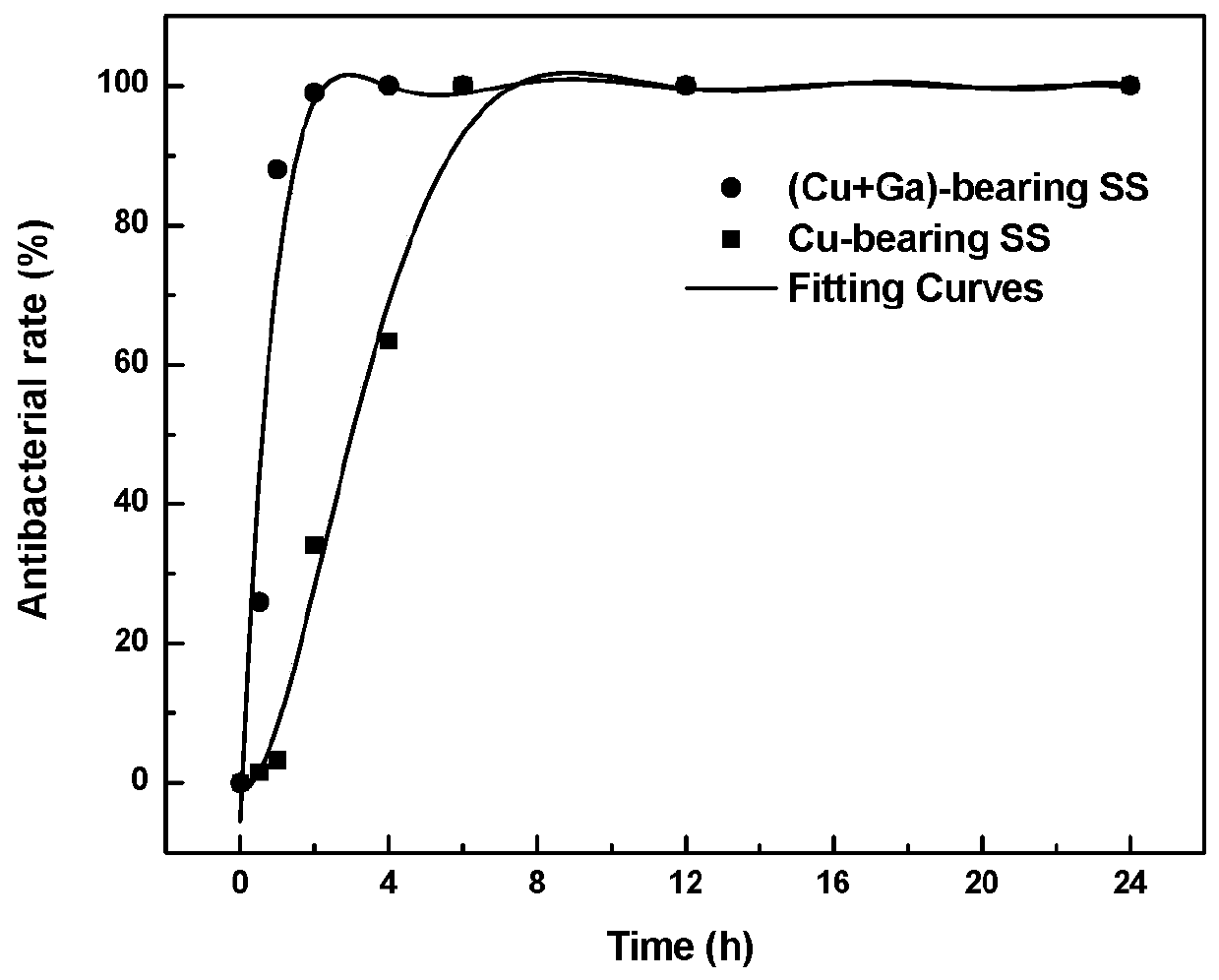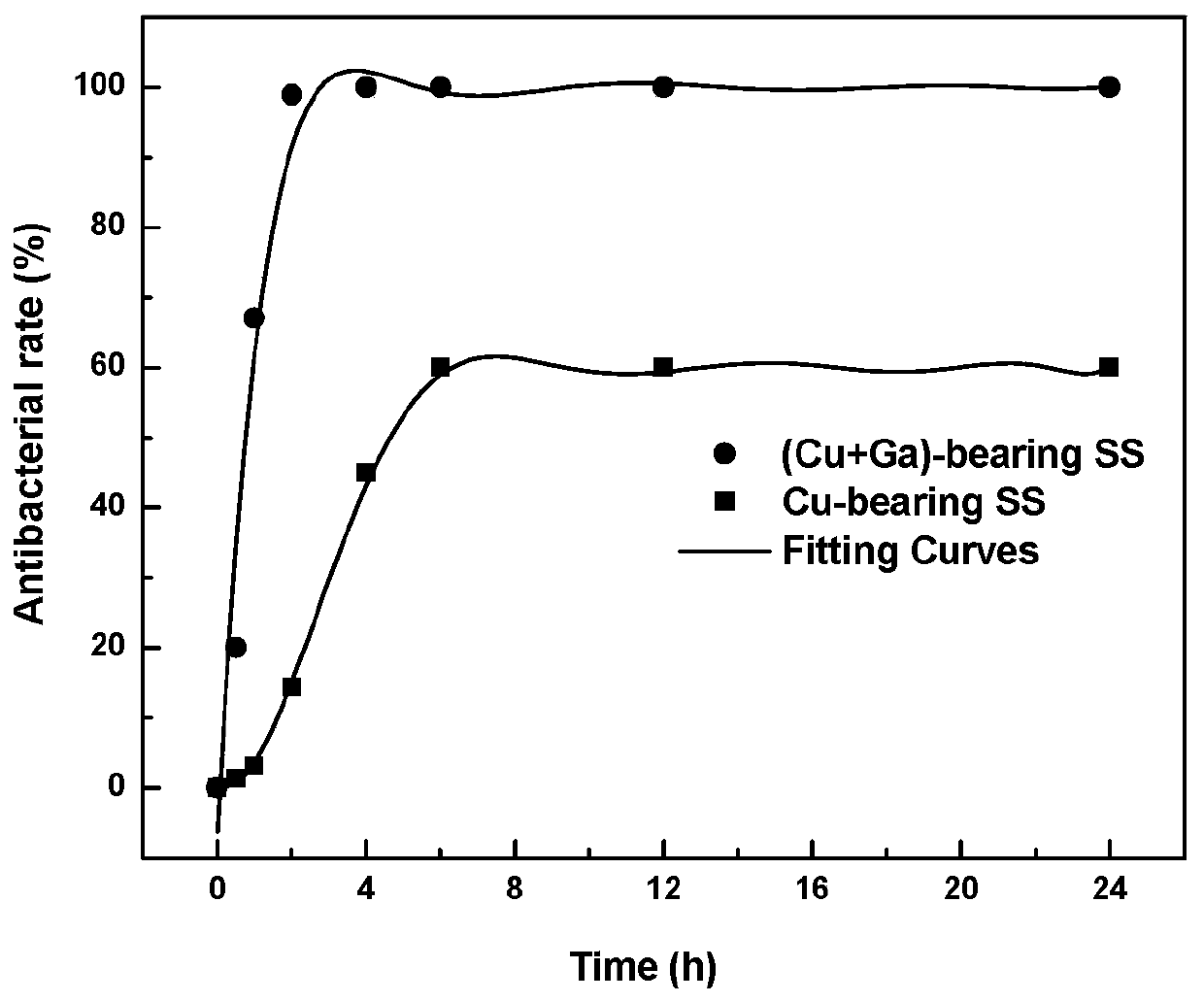Antibacterial stainless steel for food processing containers
An antibacterial stainless steel and stainless steel technology, applied in the field of stainless steel materials, can solve the problems of low antibacterial concentration and low antibacterial efficiency, and achieve the effects of increasing antibacterial effect, inhibiting bacterial proliferation, and shortening antibacterial effect time.
- Summary
- Abstract
- Description
- Claims
- Application Information
AI Technical Summary
Problems solved by technology
Method used
Image
Examples
Embodiment 1
[0032] In the present embodiment, the heat treatment process of antibacterial stainless steel is:
[0033] Insulate at 1040°C for 1 hour, and cool to room temperature with water to make Ga in the steel supersaturated; then hold at 580°C for 6 hours to precipitate Ga-rich phase in the steel, and cool to room temperature with water.
[0034] According to "JIS Z 2801-2000 "antibacterial processed products - antibacterial test method and antibacterial effect", GB / T2591-2003 "antibacterial plastic antibacterial performance test method and antibacterial effect" and other standards, and choose a bacterial concentration of 10 7 CFU / mL. The antibacterial property test to typical bacteria, the result is:
[0035] (1) Antibacterial rate against Eschericher Coli: ≥91.0%;
[0036] (2) Antibacterial rate against Staphyococcus aureus: ≥92.3%.
Embodiment 2
[0038] In the present embodiment, the heat treatment process of antibacterial stainless steel is:
[0039] Insulate at 1050°C for 2 hours, and cool to room temperature with water to make Ga in the steel supersaturated; then hold at 620°C for 5 hours to precipitate a sufficient volume fraction of Ga-rich phase in the steel, and cool to room temperature in air. For typical bacteria (bacterial concentration is 10 7 CFU / mL) antibacterial performance test, the result is:
[0040] (1) Antibacterial rate against Eschericher Coli: ≥92.0%;
[0041](2) Antibacterial rate against Staphyococcus aureus: ≥93.4%.
Embodiment 3
[0043] In the present embodiment, the heat treatment process of antibacterial stainless steel is:
[0044] Insulate at 1060°C for 3h, cool to room temperature with water, make the Ga in the steel supersaturated; then hold at 700°C for 4h to precipitate a sufficient volume fraction of Ga-rich phase in the steel, and cool to room temperature in air. For typical bacteria (bacterial concentration is 10 7 CFU / mL) antibacterial performance test, the result is:
[0045] (1) Antibacterial rate against Eschericher Coli: ≥92.6%;
[0046] (2) Antibacterial rate against Staphyococcus aureus: ≥94.7%.
PUM
 Login to View More
Login to View More Abstract
Description
Claims
Application Information
 Login to View More
Login to View More - R&D
- Intellectual Property
- Life Sciences
- Materials
- Tech Scout
- Unparalleled Data Quality
- Higher Quality Content
- 60% Fewer Hallucinations
Browse by: Latest US Patents, China's latest patents, Technical Efficacy Thesaurus, Application Domain, Technology Topic, Popular Technical Reports.
© 2025 PatSnap. All rights reserved.Legal|Privacy policy|Modern Slavery Act Transparency Statement|Sitemap|About US| Contact US: help@patsnap.com



